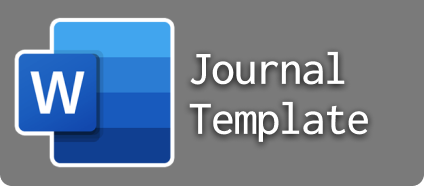ANALISIS KADAR KROMIUM TOTAL PADA AIR SUMUR BOR, RESERVOIR, DAN KONSUMEN MENGGUNAKAN SPEKTROFOTOMETRI UV-VIS
DOI:
https://doi.org/10.22373/amina.v3i1.1952Keywords:
Kromium Total, Air Sumur Bor, Air Reservoir, Air konsumen, Spektrofotometri UV-VisAbstract
Salah satu logam berat yang berbahaya bagi kesehatan jika terkandung dalam air adalah kromium (Cr6+ ) yang bersifat karsinogenik bagi tubuh. Logam berat yang dianalisis dalam penelitian ini adalah logam kromium total, dimana kromium total merupakan penggabungan antara kromium hexavalen (Cr6+) dan kromium trivalen (Cr3+). Metode yang digunakan dalam penelitian ini adalah metode Spektrofotometri UV-VIS. Hasil penelitian menunjukkan bahwa air sumur bor mendapatkan kadar berkisar 0,100 Abs dan 0,05 mg/L, air reservoir mendapatkan 0,034 Abs dengan konsentrasi 0,02 mg/L, air konsumen-1 0,023 Abs dengan konsentrasi 0,01 mg/L dan air konsumen-2 0,019 Abs dengan konsentrasi 0,01 mg/L. Dari hasil analisis diperoleh bahwa kadar logam krom total dalam air sumur bor, reservoir, dan konsumen tersebut masih dibawah ambang batas standar baku mutu air limbah yaitu sebesar 0,05 mg/L untuk kadar logam kromium total.
References
Institut Nasional. (2015). Untuk Keselamatan dan Kesehatan Kerja. Lithium Hydroxide. Dipulihkan dari cdc.gov.
Jacobs J. Testa SM. Avakian CP. (2004). Chromium(VI) Handbook. CRC Press, Page 1-22
Kantasubrata. J. (2012). Validasi Metode Pelatihan Pemahaman dan Penerapan SNI ISO/IEC 17025:2008 Pada Pengelolaan Laboratorium. Bandung : RC Chem Learning Centre
Marzuki, I. (2011). Penetralan Limbah Beracun Hidrogen Peroksida dengan Metode Peningkatan pH dan Temperatur. Jurnal Phinisi. Vol. 6 (2): 26-35
Panggabean. A.S., Pasaribu. S. P., Amran. M. B., Buchari. (2013). Gas-liquid Separator Integrated to HG-QFAAS Method For Determination of Tin at Trace Levels In The Water Samples. Indones J. Chem Sci. 8 (1) : 17-27
Riyanto. (2014). Validasi dan Verifikasi Metode Uji. Yogyakarta: Deepublis
Downloads
Published
Issue
Section
License
Amina Journal a uses license CC-BY SA
Amina Journal uses license CC-BY-SA or an equivalent license as the optimal license for the publication, distribution, use, and reuse of scholarly works.
This license permits anyone to compose, repair, and make derivative creation even for commercial purposes, as long as appropriate credit and proper acknowledgement to the original publication from Amina Journal is made to allow users to trace back to the original manuscript and author.
Readers are also granted full access to read and download the published manuscripts, reprint and distribute the manuscript in any medium or format.






















